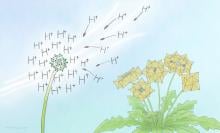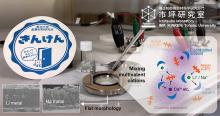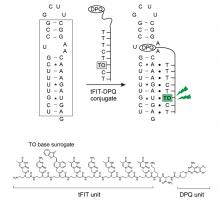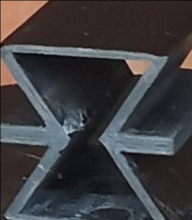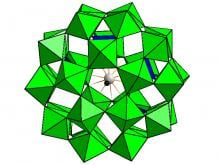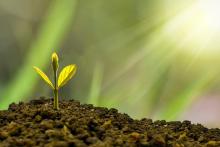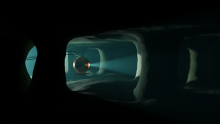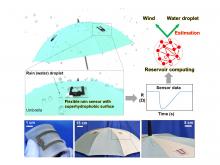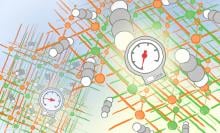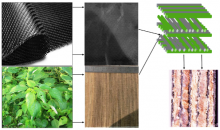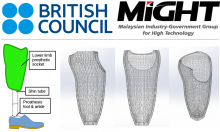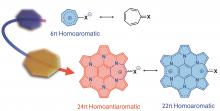Materials
News
22 Jun 2022
New dinosaur species used claws to graze along the coast, More accurate rainfall predictions, Magnetism helps futuristic cell research, Do compression garments facilitate muscle recovery? Science journalism and why it matters for democracy and our Image of the month. Read all in the June's Editor's Choice and this month's Asia Research News 2022 magazine pick - Lessons from the dead.
18 Jun 2022
The molecule is unusual and has ‘great potential’ in catalysis, conduction and other applications.
07 Jun 2022
Researchers at Tohoku University have unearthed a means to stabilize lithium or sodium depositions in rechargeable batteries, helping keep their metallic structure intact. The discovery prevents potential battery degradation and short circuiting, and paves the way for higher energy-density metal-anode batteries.
06 Jun 2022
Researchers at the Institute of Industrial Science, The University of Tokyo studied the anomalous properties of amorphous solids, including glasses, using computer simulations, and found a common vibrational mechanism underlying them, which may help control the glass properties
06 Jun 2022
In order to quickly detect the presence of the influenza A virus, researchers developed a fluorogenic probe that could bind to the promoter region. A fluorogenic probe uses tiny molecules called fluorophores that emit light when a specific target is present.
05 Jun 2022
An international team of researchers, led by Changfang Zhao, from Nanjing University of Science and Technology, has developed a novel lightweight, high toughness auxetic structure made from plastic composite laminates. The auxetic structure may be used for constructing primary structures in the transport industry, such as electric vehicles, to maximize fuel efficiency.
03 Jun 2022
Asia Research News monitors the latest research news in Asia. Some highlights that caught our attention this week are alien civilizations, prehistoric bird diets, and how we smell.
30 May 2022
A research group has revealed a new cobalt-chromium-based alloy that shares the strength, ductility and flexibility of human bones, making it ideal for implants that replace or support damaged bones.
25 May 2022
Researchers in Japan demonstrated the benefits of a new non-radioactive, neutral negative staining reagent by imaging viruses at nanometer-scale.
25 May 2022
A model that rapidly searches through large numbers of materials could find sustainable alternatives to existing composites.
19 May 2022
Structural color printing creates new pathways for medical diagnostics and miniaturized sensors
16 May 2022
Researchers from the Osaka Metropolitan University Graduate School of Engineering have successfully developed a new technique allowing them to observe gas molecules packing into metal-organic frameworks (MOF) using infrared spectroscopy. Their innovation was to measure polarized light absorption of guest molecules in a MOF film to deduce molecule alignment using this common piece of lab equipment. This method is the first to show guest alignment and does so in real-time, while using an accessible and easily adoptable experimental setup. A short video (4 min) recreating their spectrometer modifications can be found in the Reference section.
13 May 2022
The new multi-tasking weather sensor simultaneously measures rain volume and wind speed. Incorporating machine learning to analyze the output data, a single sensor can provide localized weather data in a timely manner, improving disaster preparedness.
13 May 2022
Molecular robots work cooperatively in swarms, LED lights made from rice husk, Muonic x-rays safely see inside samples, Making a luminescent material shine brighter and How to counter vaccine hesitancy, Read all in the May Editor's Choice and this month's Asia Research News 2022 magazine pick - Absorbing impact: Inside the Head of a Woodpecker.
12 May 2022
Researchers at Osaka Metropolitan University and Osaka University used numerical simulations to confirm observations of quantized vortices in superfluid helium using silicon nanoparticles, improving understanding of quantum fluids and superconductors.
06 May 2022
2.5-dimensional materials promise new applications for artificial intelligence, electronics, automobiles and the energy sector.
28 Apr 2022
Lithium-ion batteries power our everyday products, from laptops to vehicles, because of their safety, longevity, and charging speeds. Yet their production relies on rare metals such as cobalt and nickel. Now, a research group has unearthed a potential method for incorporating more common and cheaper elements as synthesizing electrode materials.
21 Apr 2022
A porous material, which opens to receive highly flammable acetylene and closes to release it, sidesteps the flaws of the existing storage method.
18 Apr 2022
An international team of researchers from India and Singapore has successfully developed a novel coating with enhanced water repellent properties using natural material from the waste crab shell.
11 Apr 2022
Milling rice to separate the grain from the husks, produces about 100 million tons of rice husk waste globally each year. Scientists searching for a scalable method to fabricate quantum dots have developed a way to recycle rice husks to create the first silicon quantum dot LED light. Their new method transforms agricultural waste into state-of-the-art light-emitting diodes in a low-cost, environmentally friendly way.
10 Apr 2022
A multidisciplinary international team of researchers, led by Professor Shukur Abu Hassan, offers new insights about how the load-uptake capacity in a novel hybrid fiber reinforced polymer composite materials can be enhanced.
10 Apr 2022
A team of materials researchers from India, Thailand, Malaysia, China and UK has successfully produced a fibre reinforced polymer composite material using natural fibres from the coconut stalk.
10 Apr 2022
Malaysian and UK medical device and composite materials experts have partnered up to research into using natural fibres for prosthetic limb technology to lower the cost of the prosthesis
04 Apr 2022
Scientists have found a common substance that can reversibly and rapidly store and release relatively large amounts of low-grade heat without decomposing. The research could lead to more efficient reuse of industrial waste heat.
01 Apr 2022
Asia Research News monitors the latest research news in Asia. Some highlights that caught our attention this week are a magnetic slime, training for robotic surgeries, and the furthest star from Earth.
09 Mar 2022
- New HPHAC analogues with an embedded nonbenzenoid aromatic ring have been synthesized.
- The newly synthesized HPHACs exhibit multistep redox properties and their dicationic species showed an aromatic nature based on macrocyclic conjugation.
- Methylation on the nonbenzenoid aromatic ring resulted in the development of "antiaromaticity".
08 Mar 2022
Researchers have developed a new method for rapid 3D imaging. Instead of having to scan repeatedly in 2D, the researchers proposed a one-scan technique that uses a light needle to process at depth and laterally.
07 Mar 2022
A magnetic hybrid system generates electricity day and night with radiative cooling and solar heating.
03 Mar 2022
Devices that can see shortwave infrared light, which is invisible to the naked eye, could soon become cheaper and more accessible to a broader consumer base.
Events
Sorry, no events coming up for this topic.
Researchers
Sorry, no researchers coming up for this topic.
- « first
- ‹ previous
- 1
- 2
- 3
Giants in history
Abdus Suttar Khan (c. 1941 – 31 January 2008) was a Bangladeshi engineer who spent a significant part of his career conducting aerospace research with NASA, United Technology and Alstom.
Lin Lanying (7 February 1918 – 4 March 2003) was a Chinese material engineer remembered for her contributions to the field of semiconductor and aerospace materials. Lanying was born into a family who did not believe in educating girls and she was not allowed to go to school.



